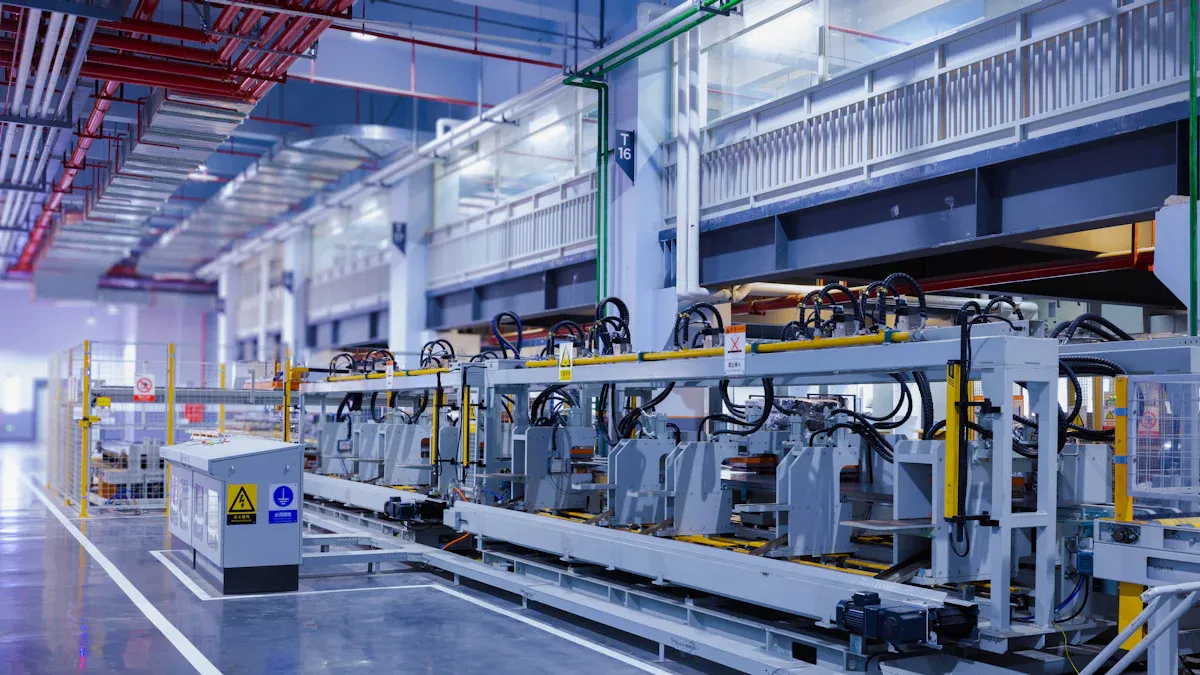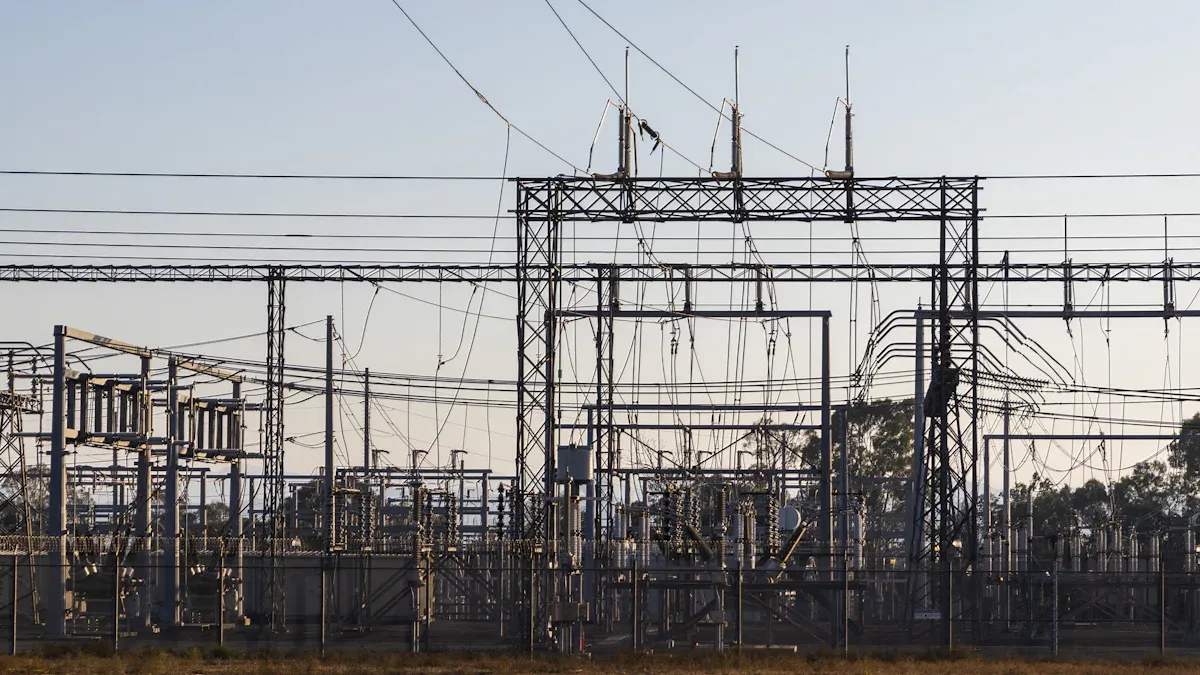What Is the Difference Between Line Balancing and Load Balancing

You should know that line balance and load balance fix different problems. Line balance helps you match work time with what you want to make in factories. Load balance lets you share jobs or data across computers or machines. Knowing these differences helps you make good choices in factories and IT.
Definitions

Line Balancing
You often hear about line balancing in factories or production lines. This process helps you make sure each workstation has the right amount of work. When you use line balancing, you want to keep every worker busy and avoid wasted time. Here are some key points about line balancing:
Assembly line balancing means you distribute tasks among workstations so everyone has an equal workload.
You assign tasks to workers to meet your production goals and reduce idle time.
This method helps you optimize how fast you produce items and keeps your line running smoothly.
If you use line balance and load balance correctly, you can improve how your factory works. You will see less waiting and more products made in less time.
Load Balancing
You find load balancing mostly in IT and computer systems. Load balancing means you spread out the work across many computers or servers. This process helps you make sure no single machine gets too much work while others do nothing. In cloud computing, load balancing lets you keep all your resources working at the right level. You avoid slowdowns and crashes by sharing the workload. When you understand line balance and load balance, you can manage both machines and computers better.
Line Balance and Load Balance: Key Differences

Application Areas
Line balance and load balance are used in different places. Line balance works best in factories and production lines. It helps you organize jobs for workers and machines. This makes sure each station does its job on time. There are no delays or people waiting around. Factories use smart computers and AI to balance lines fast. This helps them make more products.
Load balance is used in IT, networks, and cloud computing. It spreads work across servers and computers. This keeps systems working well and stops one server from getting too busy. New load balancing uses AI and machine learning. These tools look at data and help traffic move better. You also see load balancing in cloud setups and edge computing. It helps manage resources in many places.
Tip: If you work in a factory, use line balance to make more products. If you work with computers, use load balance to keep your network fast.
Objectives
Line balance and load balance have different goals. Line balance makes your production line work better. It helps you meet what customers want. You match worker and machine time with takt time. Takt time is how fast you need to make things. This stops slowdowns and keeps everyone busy.
Load balance helps IT systems stay up and work well. It spreads jobs across servers to stop downtime. This lets you handle more users and grow easily. Your apps keep running without stopping.
Here is a table that shows the main goals for each:
Line Balance Objectives | Description |
|---|---|
You make more products and meet customer needs. | |
You keep workers and machines busy, not waiting. | |
Preventing bottlenecks | You stop delays and keep things moving. |
Even distribution of workloads | You share jobs so no one has too much or too little. |
Enhancing productivity | You get more done on your assembly line. |
Reducing operational costs | You save money by working smarter. |
Improving overall performance | You reach your goals faster and with better quality. |
Load Balance Objectives | Description |
|---|---|
You keep apps running and easy to use, even if something breaks. | |
Enhanced Scalability | You add or remove servers without stopping your service. |
Improved Performance | You send requests to the fastest servers, making users happy. |
When you balance your production line, you match cycle time with takt time. You make just enough to meet demand. You do not make too much or too little. You also stop slowdowns and keep everyone busy. In IT, load balancing helps you use resources well. You stop downtime and make sure users get quick answers.
Both line balance and load balance help you do better. In factories, you make more products, use workers well, and finish faster. In IT, you deliver apps quicker, spend less money, and make customers happier.
Note: Experts say you should always balance jobs to stop downtime and keep things working. In factories, this means giving jobs so no one waits or gets too much work. In IT, this means planning for busy times and making sure no server can break your system.
Examples and Importance
Manufacturing Example
Factories use line balancing to work better. For example, a car company gave each worker jobs that fit their skills. This helped the company make more cars and spend less on overtime. In electronics, a company split jobs by what workers did best. This made work faster and made workers happier. Food plants also use line balancing. One company took away jobs that did not help. This made them work 40% better.
Industry | Example Description | Performance Metrics |
|---|---|---|
Automotive | Gave jobs to match skills, stopped delays | 30% more work done, less overtime |
Electronics | Split jobs, made work smoother | 25% faster work, happier workers |
Food Processing | Took away useless jobs, made work simple |
Balancing lines can be hard sometimes. Small stops can make machines work 10–15% less. Hidden problems can slow down work and are hard to find.
Small stops lower how well machines work.
Hidden problems can slow down making things.
IT Example
Load balancing helps computers work well. Imagine a fitness app gets lots of users. The servers must handle many people at once. You can use round robin to share work between servers. This keeps things fast and stops crashes. If you add new things like live streaming, you use fastest server algorithms. This sends users to the quickest server.
Real-World Scenario | Key Performance Indicators | |
|---|---|---|
Round Robin | Fitness app gets lots of logins | Fast answers, many users online |
Least Response Time | Live streaming when lots of people watch | Quick loading, many users online |
Weighted Round Robin | Custom workouts need more computer power | Strong servers, fast answers |
Least Connections | Social features with long chats | Servers share work evenly |
Load balancing can have problems too. Work changes quickly. Internet speed can go up and down. You must check servers and keep data safe.
Work changes a lot.
Internet speed is not always fast.
Keeping data safe is hard.
Why the Difference Matters
It is important to know line balance and load balance. If you mix them up, you can lose time or money. In factories, bad line balancing causes slow work and unhappy workers. In IT, bad load balancing makes apps slow and users leave. If you know both, you make better choices and work better. You can get certified to show your skills. Training helps you learn the best ways to balance lines or loads.
Tip: If you know how to use line balance and load balance, you can work smarter and reach your goals faster.
Line balancing makes sure each step in production moves at the same speed. Load balancing shares computer traffic across servers so systems do not stop.
Line balancing helps every part work together at the same pace.
Load balancing sends traffic to different servers to stop slowdowns and help things run better.
Try these methods to use your resources well and keep your work moving easily.
FAQ
What is the main difference between line balance and load balance?
You use line balance and load balance in different fields. Line balance helps you in factories. Load balance helps you in IT and computer systems.
Can you use line balance and load balance together?
You can use both if your business has factories and IT systems. Each method improves efficiency in its own area.
Why should you care about line balance and load balance?
You save time and money when you understand line balance and load balance. You also avoid slowdowns and keep your work running smoothly.
See Also
Three Major Distinctions Between MTBF And MTTR Explained
Key Variations Among MPS, MRP, And CRP You Need
Essential Principles That Define Lean Manufacturing Practices
Distinguishing Takt Time From Cycle Time: Key Insights
Comparing Discrete And Process Manufacturing: Two Distinct Approaches
About Hunan Puka
Established in 2016 and based in Hunan, China, with a liaison point in Berlin, we are a Tier 2 supplier for the automobile industry. We specialize in the production of customized aluminum die-casting parts designed for machines with a closing force ranging from 280 to 1250 tons, with subsequent manufacturing process CNC machining and surface treatment. Our commitment to quality is reflected in our accredited quality management system, certified by ISO9001:2015 and IATF16949:2016 standards.


